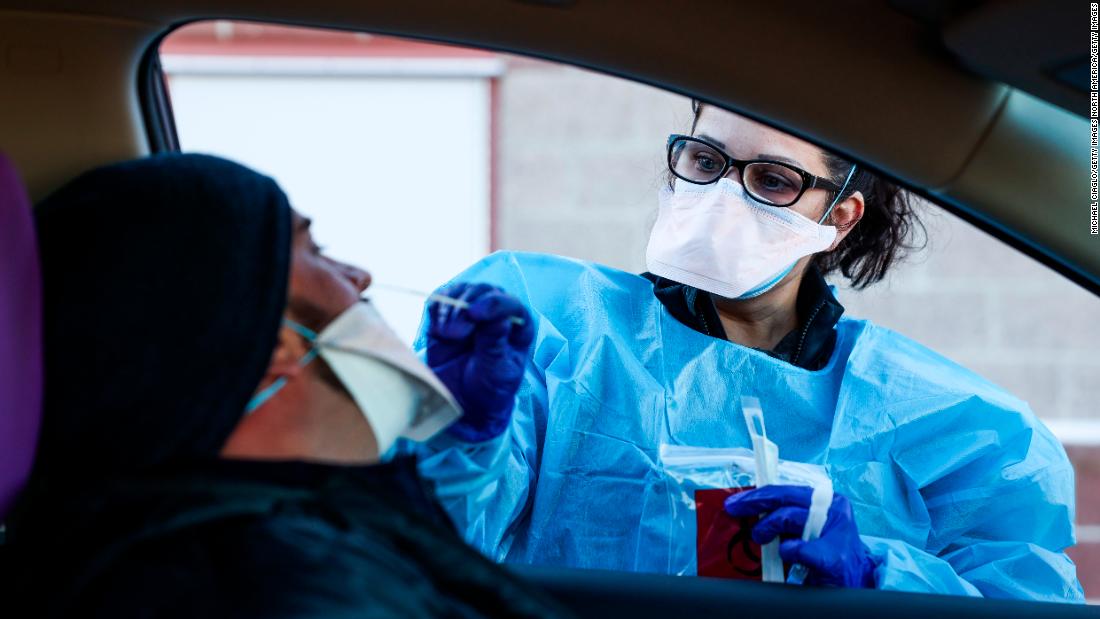Genomics researchers named variant B.1.526. It appears in affected people in different neighborhoods in New York City, they said, and is “spread across the Northeast.”
It’s “home made, presumably in New York,” said Dr. David Ho, director of the Aaron Diamond AIDS Research Center in Columbia, who led the study team in an email.
Viruses mutate all the time. The more people are infected and the longer, the greater the chance that viruses will change. A patient’s body will be loaded with billions of copies of a virus and may be slightly altered or mutated. Most come and go.
But sometimes a mutation or pattern of mutations takes over and is transmitted. If viruses with these patterns become more common, they will be called variants. Again, it is not uncommon for variants to appear, but if they give the virus worrying properties, such as better transmissibility or the ability to escape treatments and vaccines, that’s when doctors start to worry.
The mutation in this variant that most concerns researchers is called E484K and gives the virus the ability to escape part of the body’s immune response, as well as authorized treatments with monoclonal antibodies. This mutation is appearing independently in many different cases, but it also appears in a particular variant – the one called B.1.526.
“It is this new variant that has been growing, alarmingly, in our patient population in recent weeks,” wrote the Columbia team in a copy of their report provided to CNN.
“We found that the detection rate for this new variant has been rising in recent weeks. One concern is that it may be starting to outpace other strains, as well as the UK and South Africa variants,” Ho told CNN.
“However, we do not have enough data to confirm this point now.”
But the E484K mutation is seen in at least 59 different strains of coronavirus, they said – meaning it is evolving independently across the country and around the world in a phenomenon known as convergent evolution. This can give the virus an advantage.
“Everything we know about this key mutation suggests that it appears to escape pressure from the antibodies,” said Ho.
On Tuesday, two teams reported another variant that appears to be on the rise in California.
They fear that the variant may not only be more contagious, but also cause more serious illnesses. As with the New York reports, your research is in its early stages, has not been published or peer-reviewed and needs more work.
A team from the University of California, San Francisco, tested virus samples from recent outbreaks in California and found it was becoming much more common. It was not seen in any September sample, but in late January it was found in half of the samples.
This variant, which the team calls B.1.427 / B.1.429, has a different mutation pattern than the variants seen for the first time in the UK, called B.1.1.7 or B.1.351. A mutation, called L452R, affects the virus’s spike protein, which is the part that binds to cells infected by the virus.
“A specific mutation, the L452R mutation, in the receptor binding domain of the spike protein can allow the virus to fit more efficiently into cells. Our data show that this is probably the key mutation that makes this variant more infectious,” Dr. Charles Chiu, associate director of the UCSF clinical microbiology laboratory, who led one of the studies, told CNN.
And they found some evidence that it is more dangerous. “In this study, we observed an increase in the severity of the disease associated with B.1.427 / B.1.429 infection, including an increased risk of high oxygen demand,” they wrote in their report, which will be posted on a prepress server at end of this week after public health officials in San Francisco analyzed it.
Chiu said that it should be designated as a variant of concern and a study priority.
A second team from Unidos en Salud, a non-profit organization based in San Francisco that offers rapid testing in the Mission District of San Francisco, tested 8,846 people during the month of January and sequenced the virus from 630 of the samples. They also found a rapid increase in the variant.
“The survey results indicate that the L452R variant represents 53% of the positive test samples collected between 10 and 27 January. This is a significant increase from November, when our sequencing indicated that this variant comprised only 16% of the positive tests. “, Dr. Diane Havlir, an infectious disease specialist at UCSF who is helping to conduct the study, said in a statement.
Havlir’s team is also preparing the results for publication.
